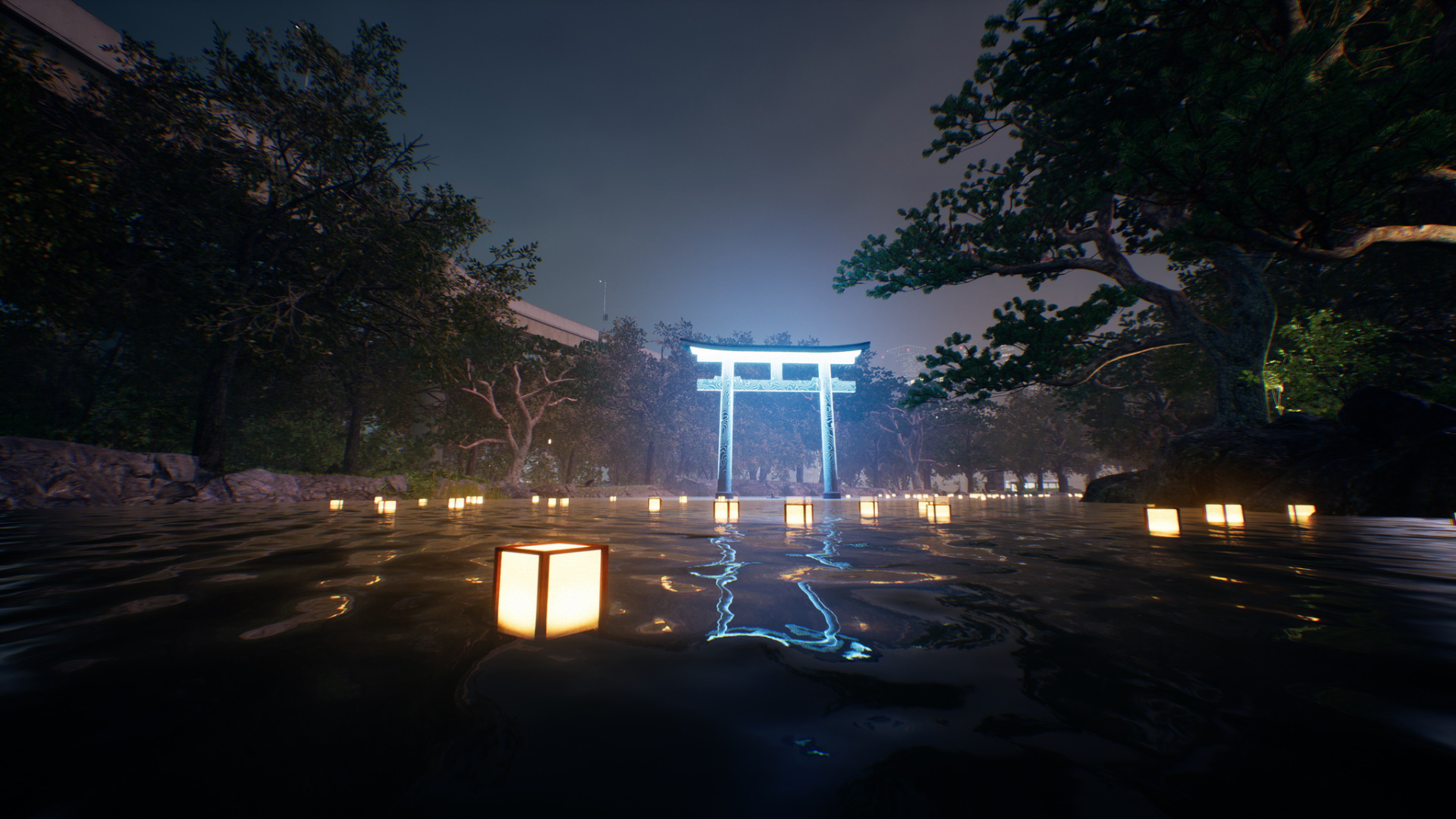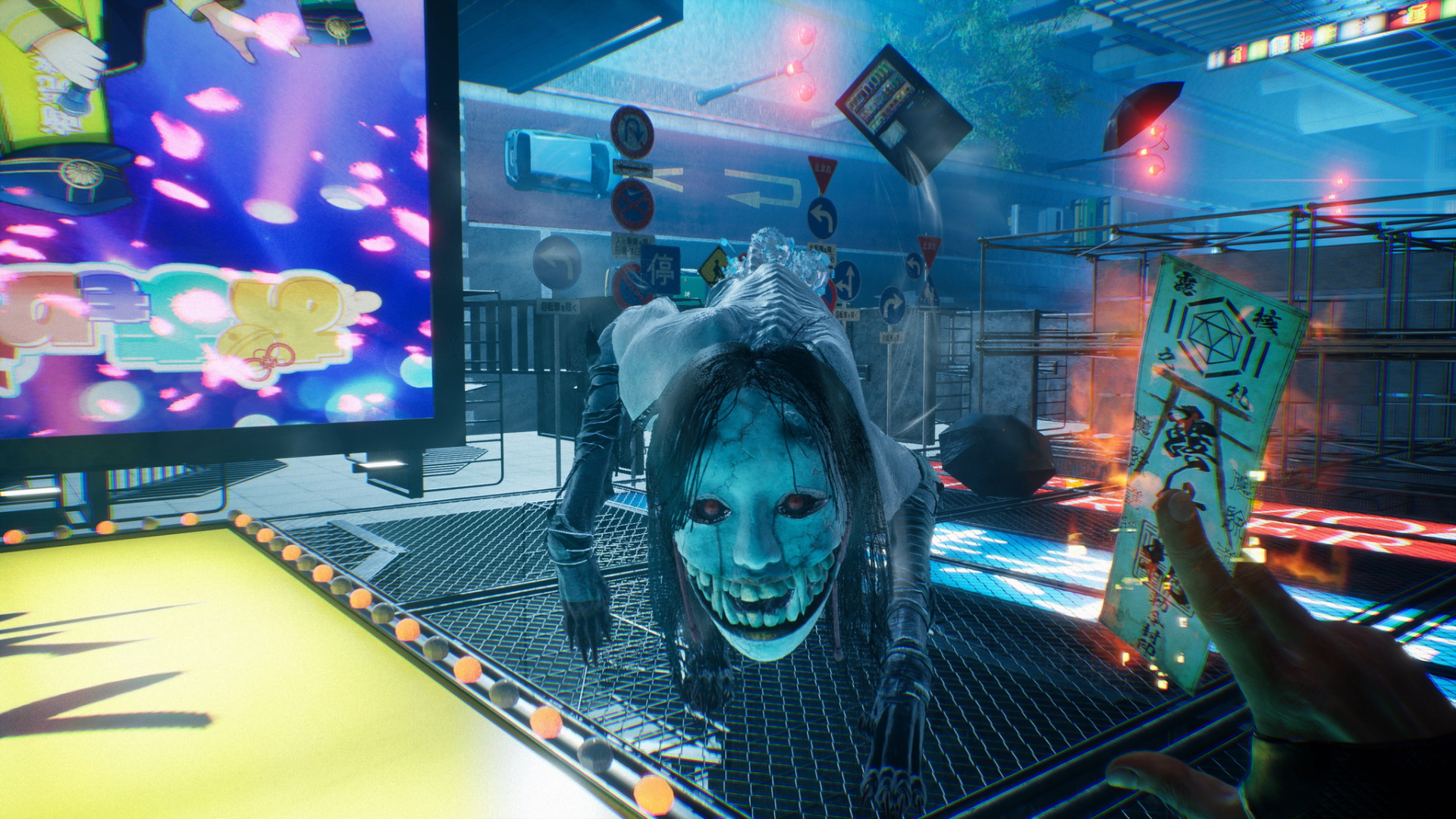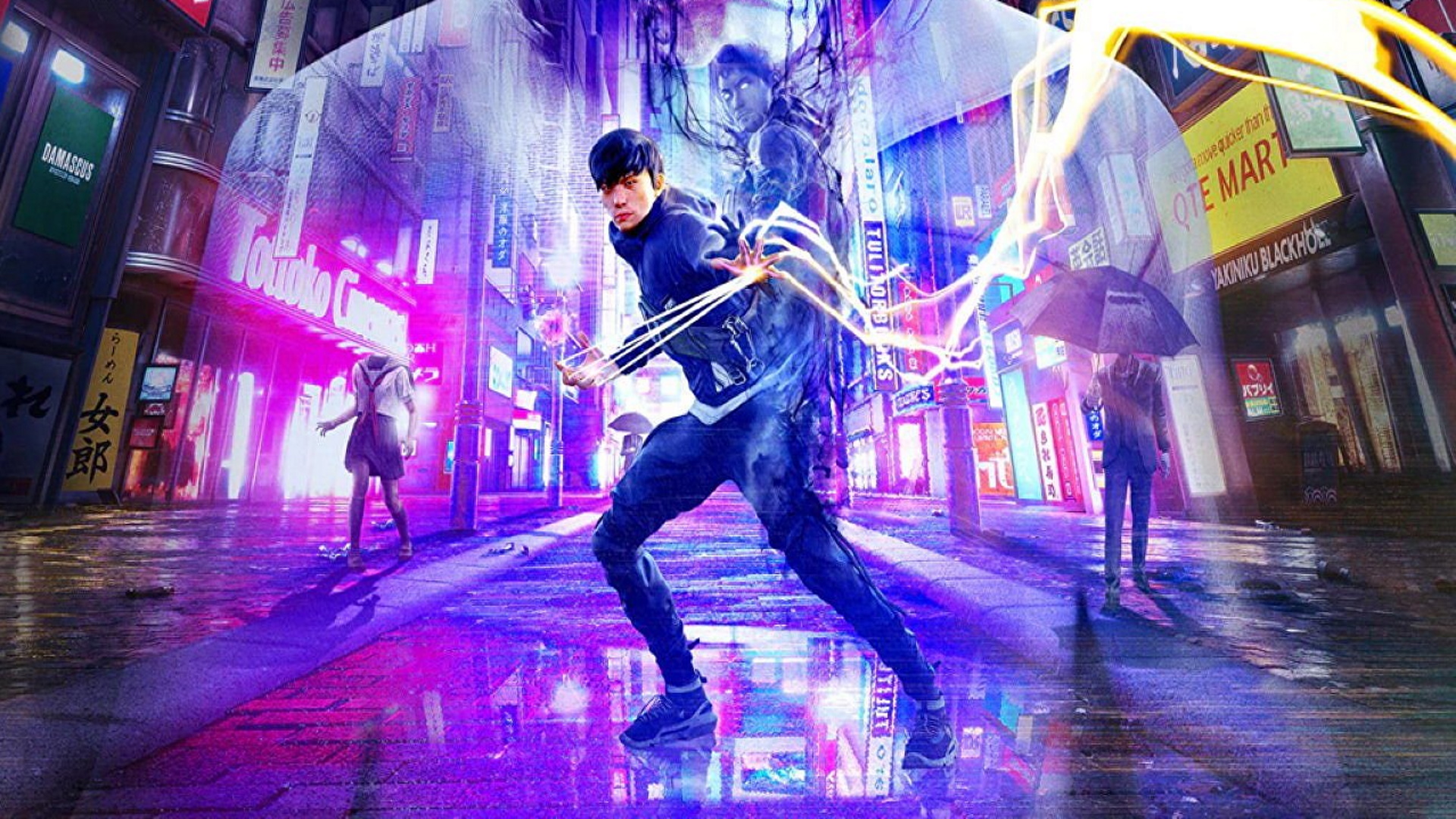You’re supposed to stop when the light turns red, but in Ghostwire Tokyo, that’s when things get going. The Visitors come out to play — or, more accurately, come out to “rip your body apart and send your soul to the netherworld for eternal punishment.”
It’s hardly the ideal tourist destination, but you’re specially suited to explore the deadly city and its mysterious marvels thanks to a near-death experience and some flashy supernatural powers. Ghostwire Tokyo has no shortage of supernatural panache, and while it comes at the expense of substance in some key areas, it’s still a blast to play.
Ghostwire Tokyo Review: Trapped Tourist
Ghostwire Tokyo begins as the city seemingly comes to an end. A mysterious fog covers Tokyo following a string of disasters, and everyone it touches has their souls torn from their bodies. Akito, the protagonist, lies on the brink of death, a perfect shell for KK, a dead ghost hunter ex-cop, to occupy — or so he thinks. Akito is still very much alive, which leads to a struggle for control over his body and, eventually, an uneasy peace where KK guides and Akito acts.
The story is fairly simple. Hannya, the villain in the mask, wants to complete a dark ritual of salvation using the harvested souls of Tokyo’s citizens. KK wants to stop him simply because he’s a (dead) ghost-hunting police officer, while Akito has a more personal reason: he wants to save his sister, a burn victim who’s also Hannya’s chosen vessel for performing his rite.
Despite bookending each chapter and major setpiece moment, the story takes a backseat to the city itself and the wonderfully bizarre inhabitants you find therein. Their bodies might be gone, but what’s left of Tokyo’s populace is still in need of assistance, and it just so happens your command over the elements fits the bill exactly.
Ghostwire Tokyo has probably a few too many side quests and extras — the small-ish map size belies a staggering amount of things to do — but they’re the heart of Tango’s Tokyo vision. One early quest sees you cleansing a bathhouse of invading Visitors to keep the pent-up negative energy from flooding the nearby streets and attracting even more Visitors. Another involves finding tanuki hidden around a festival area by looking for tanuki-shaped items, identifiable only by the tails they’ve sprouted.
Ghostwire’s quests cover a surprising range of emotions and ideas, from greed and human failing to folklore, exploiting the vulnerable, and other social issues. It’s not quite as in-depth as something like Yakuza, for example. You’ll solve the immediate problem and usually get some insightful commentary from KK, but even though it stops short of saying something meaningful, it still addresses issues in a way most games never even try — even if it’s just shedding light on it and acknowledging it exists.
When you’re not finding and finishing side quests, you’ll be exploring Tokyo itself, which is a bit of a mixed bag. During my preview, I mentioned the possibility that exploration and discovery might get a bit stale since Ghostwire revolves mostly around a few variations of the same basic tasks: find and recover lost spirits, free them, find more spirits, battle Visitors, repeat.
Ghostwire’s Tokyo is absolutely gorgeous and full of personality, despite everyone having vanished, but even with a map full of icons and points of interest, there’s just not much to do.
Most buildings are closed to exploration, and the ones you can enter for quests usually have nothing of much interest. Going out of your way to explore the map is sometimes a reward in itself as you put Ghostwire’s unique traversal methods to good use, and that’s a good thing since the typical reward outside of that is more spirits or one of a variety of collectibles like a Jizo statue, relic, or investigation note, among many others.
I’d have much preferred a smaller city with more interesting discoveries and deeper quest lines, though Ghostwire still manages to practically overflow with character and charm. Every item has a lengthy description delving into its cultural origins and significance.

Visitors that aren’t right out of Japanese folklore are, instead, born from collective negative energy stemming from certain social archetypes — the repressed student or the aimless businessman, for example. Cat yokai run the city’s stores, while live cats share their thoughts and perhaps a riddle if you speak to them, perhaps pointing out a Tanuki just around the corner.
By far the best way to experience Ghostwire Tokyo is spontaneously, ignoring map icons and just going after something you think looks interesting. Explore streets if you want to, pursue the interesting sounds you hear, feed the dogs and watch in joy as they dig through concrete to get you some money in return or point out a hidden Oni. Ghostwire wants to surprise and delight, which makes its pairing with standard open-world design a bit baffling.
There’s a similar sense of wanting from combat, too, which is engaging and lacking at the same time. Akito gains mastery over a handful of elements, including wind, fire, and water, each with its own unique attack styles. Wind is a basic shooter-type style, where Akito fires off wind blades, while fire launches huge and explosive flame lances. Each element has its own ether meter and a charged variant that alters how it functions, but even with Akito’s skill tree, it never evolves too much.
The bow and arrow adds an extra layer of strategy and lets you take down enemies potentially without attracting much notice. Arrow scarcity means you can never fully rely on this tactic and still need to plan carefully. Ghostwire also has a handful of Talismans to augment your abilities, such as distracting Visitors so you can sneak by or stunning them to create an opening. I didn’t find they made a huge difference but appreciated the extra options all the same.
Running from enemies and firing off deadly elements over and over again sounds boring, but it’s the actual action that’s fun, thanks in no small part to Tango’s excellent enemy placement and encounter design. Every encounter feels deadly, like one wrong move could spell your end — usually because it can. “It’s just one Visitor, Akito, how much harm could it cause?” you may ask yourself, but even one faceless, tortured businessman can end Akito and KK’s quest for vengeance faster than you might think. Factor in restricted arenas and different Visitor types ganging up on you, and fights get tense very quickly.
Ghostwire Tokyo Review — The Bottom Line

Pros
- Gorgeous, unique world.
- Strategic and fun combat.
- Absolutely packed with character.
- Interesting social take on side quests.
Cons
- Not much to do in the world.
- No substantial rewards for exploring, and not much to find either.
- Combat and story feel a bit basic at times, like part of something that should have been bigger.
Ghostwire Tokyo is essentially what I thought it would be, for better and for worse. It’s charming but empty, ambitious but too formulaic, and it’s got the most personality of any game I’ve played this year. I sincerely hope Tango has more Ghostwire in store, either as DLC or a sequel. Despite its issues, there’s nothing else quite like it.
[Note: Bethesda provided the copy of Ghostwire Tokyo used for this review]











Published: Mar 23, 2022 10:58 am